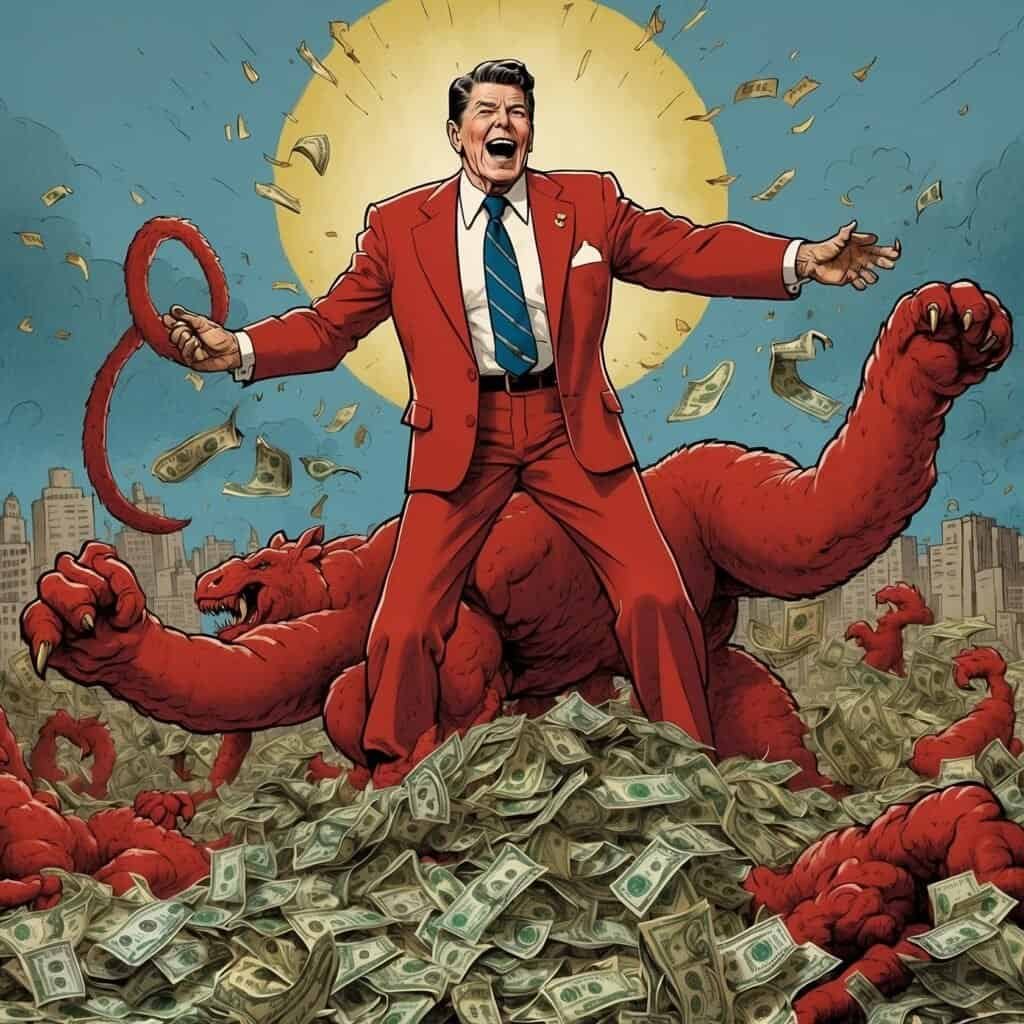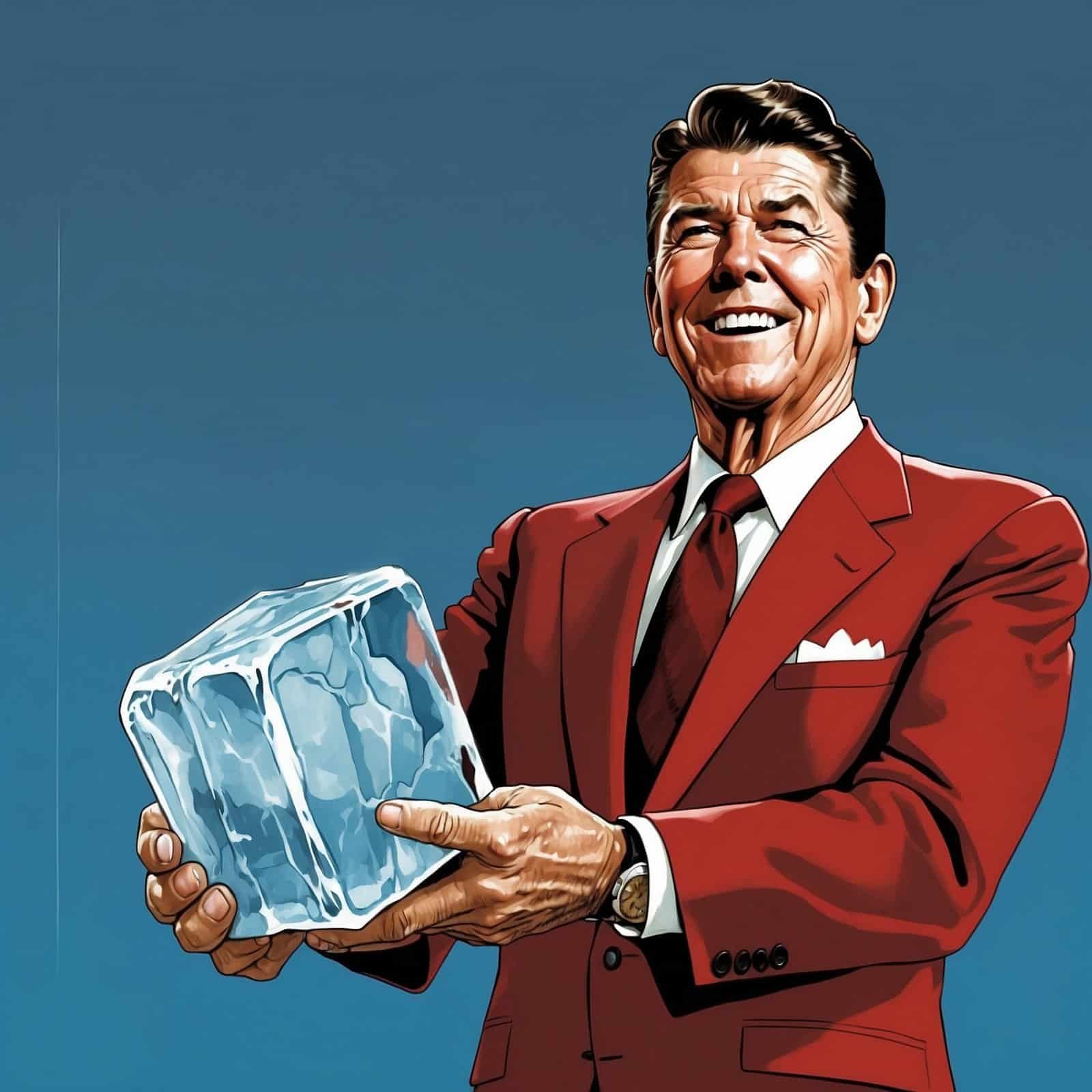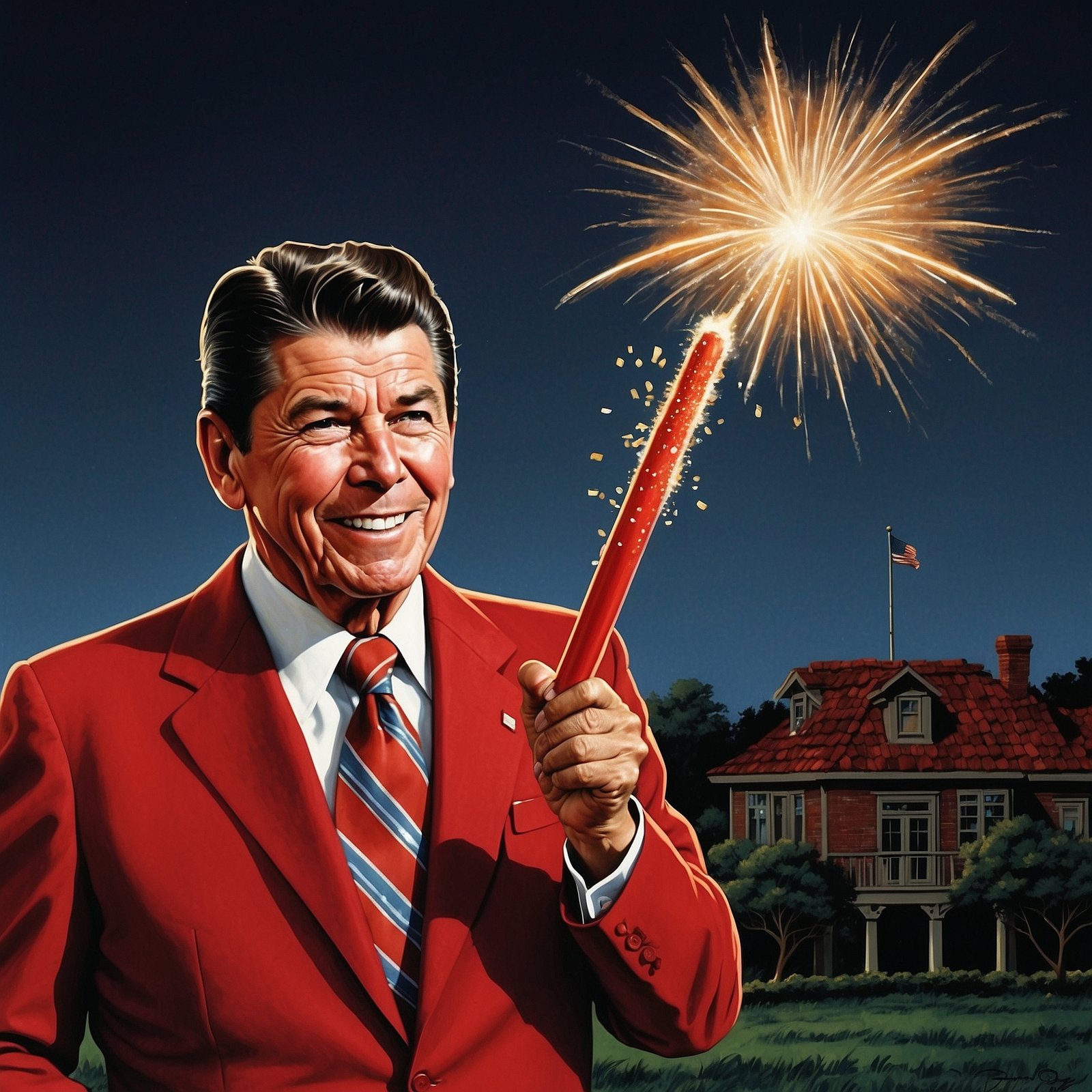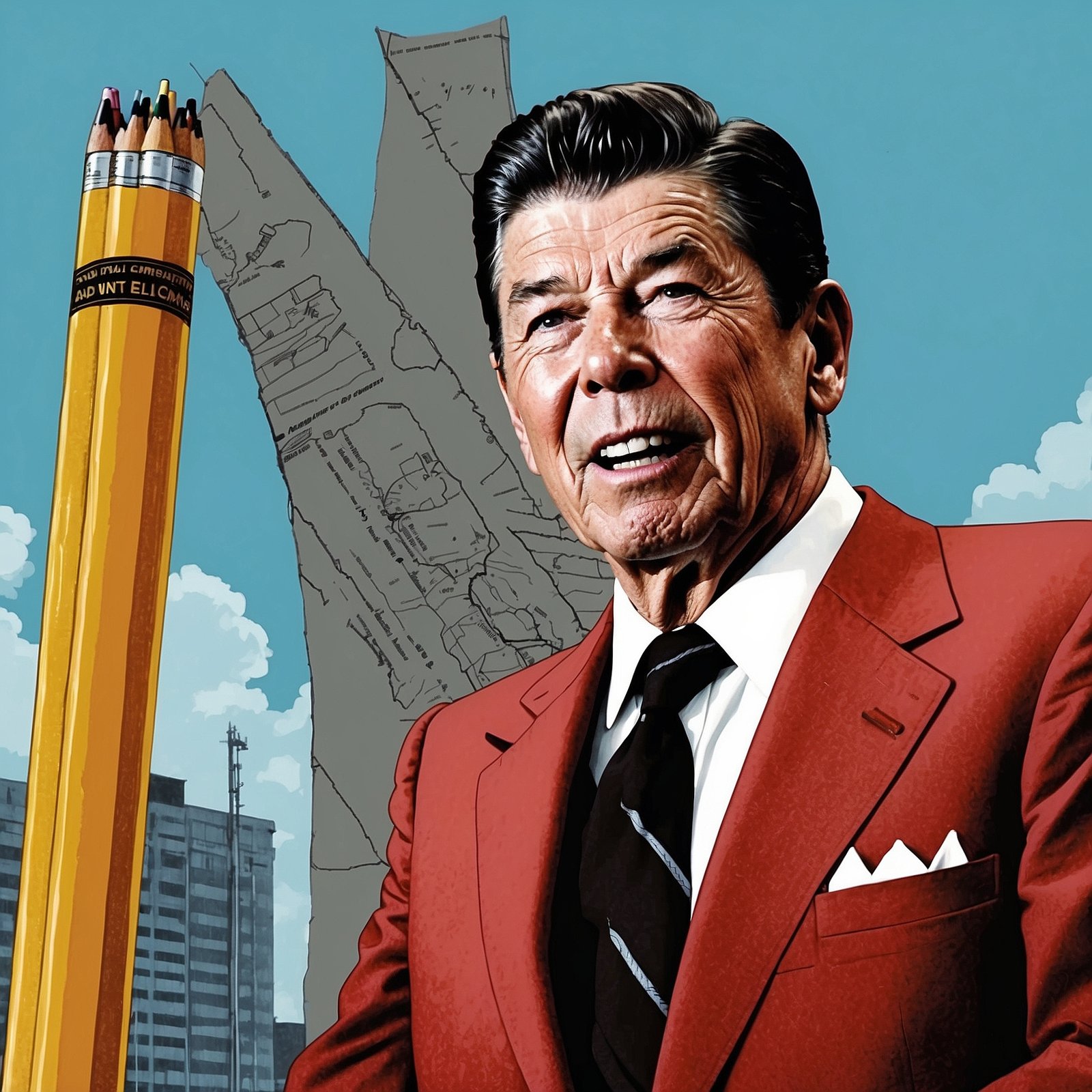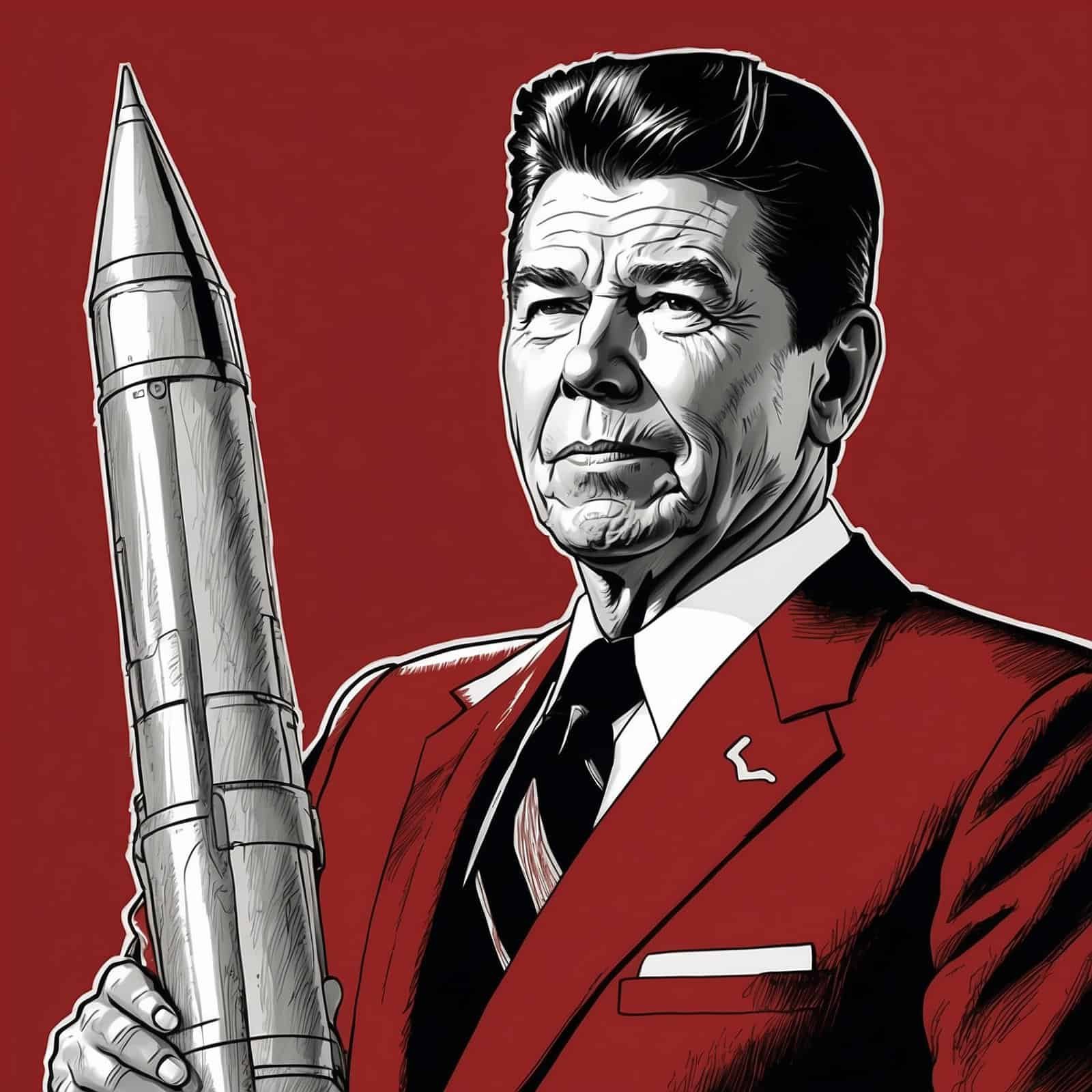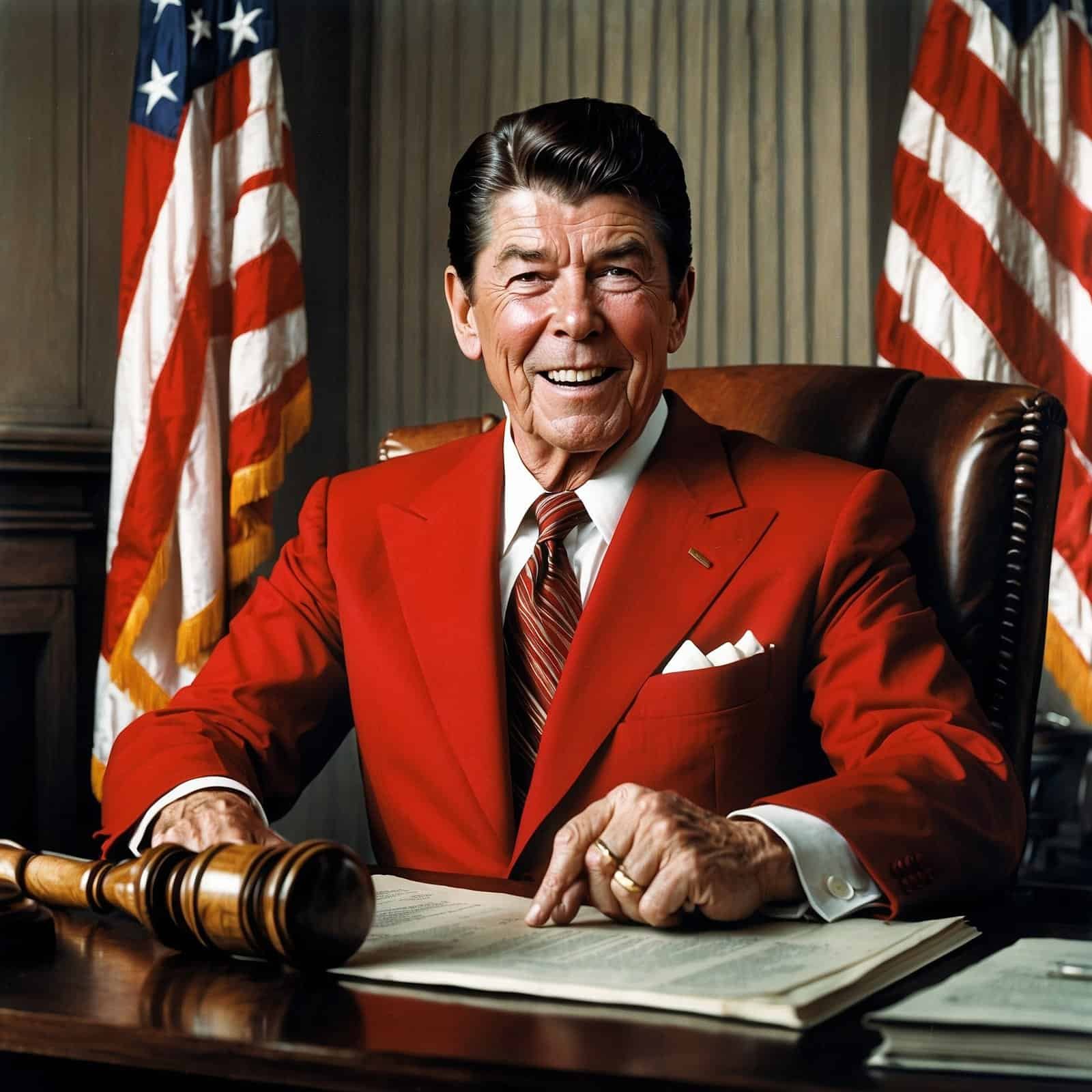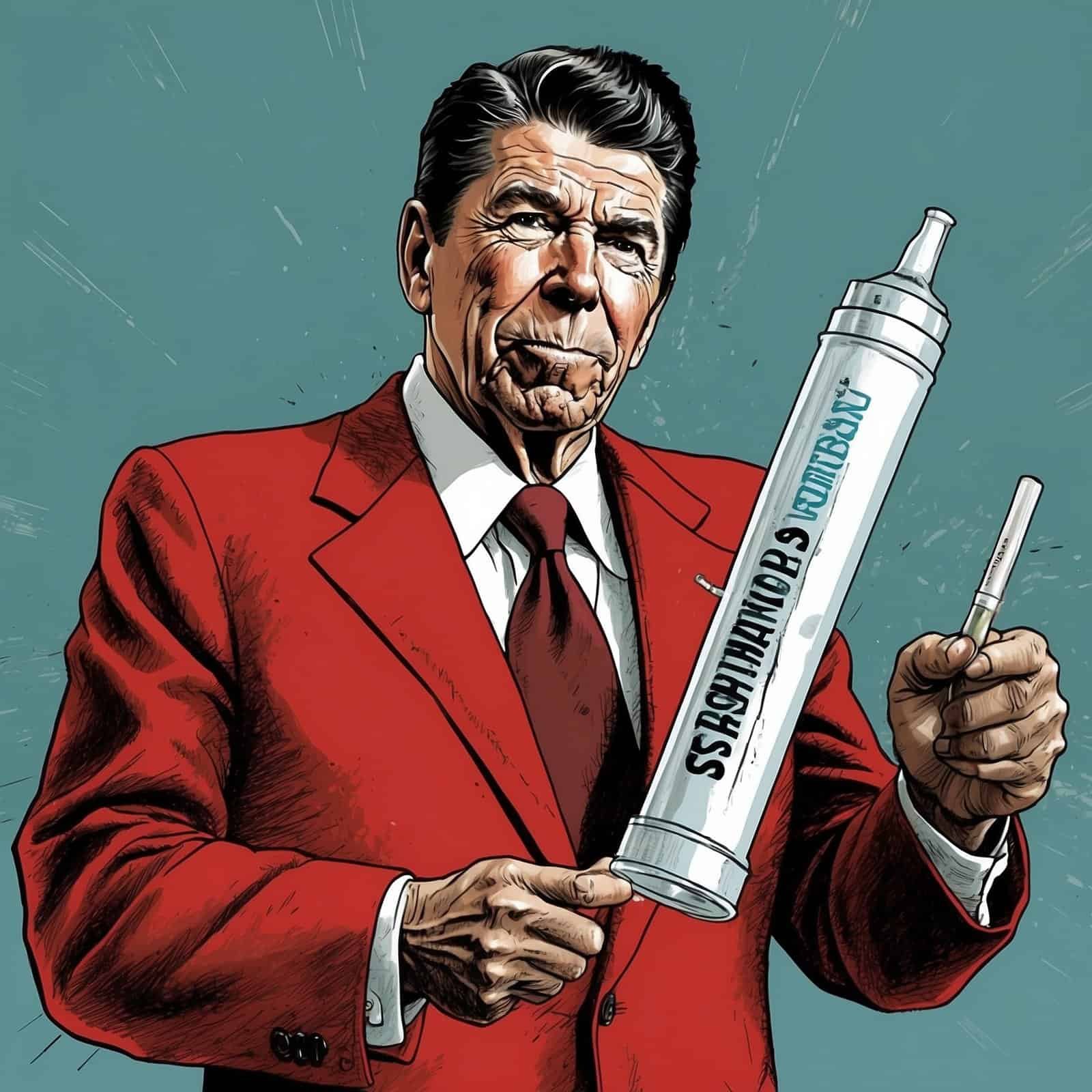Back in the late 1970s, inflation was like that one relative who overstays their welcome at family gatherings—annoying, persistent, and impossible to shake off. By the time Ronald Reagan took office in 1981, America was wrestling with double-digit inflation rates that made buying groceries feel like splurging on a luxury yacht. So, how did Reagan manage to show this economic party-crasher the door? Grab your popcorn, folks, because we’re about to unpack Reagan’s masterclass in inflation busting.
The Conservative Economics Playbook
Reagan didn’t just flip through the conservative economics textbook; he practically rewrote it. His game plan? Shrink the government until it could fit in a bathtub and let the free market run wild like a kid in a candy store. The recipe was simple: slash taxes, cut red tape, and tighten the money supply to put inflation in a chokehold. It wasn’t rocket science; it was freedom science—giving individuals and businesses room to breathe without Big Brother breathing down their necks.
The Volcker Shock: When Interest Rates Went Sky-High
Enter Paul Volcker, the Federal Reserve Chair who made tough decisions look easy. Volcker’s strategy was about as subtle as a sledgehammer: crank up those interest rates until inflation cried uncle. It wasn’t a move that would win him any popularity contests, but Reagan stood by him like a rock. Sometimes, you need to rip off the economic Band-Aid to heal the wound.
The Volcker Effect: Interest Rates vs. Inflation
| Year | Federal Funds Rate | Inflation Rate |
|---|---|---|
| 1979 | 11.2% | 13.3% |
| 1981 | 16.4% | 10.3% |
| 1983 | 9.1% | 3.2% |
Tax Cuts: The Economic Caffeine Shot
Reagan’s administration cooked up a buffet of tax cuts that would make any fiscal conservative’s mouth water. The Economic Recovery Tax Act of 1981 was the main course, slashing income taxes across the board and putting more green in the wallets of hardworking Americans. It wasn’t about fattening up the government piggy bank; it was about lighting a fire under the economy’s behind. Lower taxes meant more cash to splash, boosting spending and investment faster than you can say “trickle-down economics.”
Deregulation: Unleashing the American Tiger
But wait, there’s more! Reagan knew that chopping taxes alone wouldn’t cut the mustard. He set about slashing red tape like a lumberjack in a forest of bureaucracy. By peeling back layers of government oversight, Reagan let American innovation off the leash. It was like taking the governor off a race car engine—suddenly, businesses could roar ahead at full throttle, leaving the competition (and inflation) in the dust.
The Great Ideological Showdown
Now, let’s not sugar-coat it—this was more than just economic policy; it was a clash of worldviews that would make the Avengers vs. Thanos look like a playground scuffle. In the red corner, we had Reagan’s vision of a lean government and a beefy private sector. In the blue corner, the liberal dream of Robin Hood economics—tax the rich, feed the poor, and let the government play nanny. Reagan’s approach was like opening the windows in a stuffy room, letting in a gust of fresh, free-market air to blow away the stale stench of 1970s stagflation.
Tightening the Belt (Except for Defense)
When it came to public spending, Reagan wasn’t afraid to play bad cop. He took a machete to social programs, but don’t think for a second he was all about cuts. Oh no, when it came to defense, Reagan opened up the checkbook like a sailor on shore leave. It was a one-two punch of fiscal responsibility at home and muscle-flexing abroad. This move had liberals clutching their pearls, but it aligned perfectly with the conservative playbook of personal responsibility and a strong national defense.
The Reagan Revolution: By the Numbers
So, what was the score after Reagan’s economic boxing match with inflation? By the mid-80s, inflation had gone from a roaring lion to a purring kitten, dropping from a wallet-busting 13.5% in 1980 to a much more manageable 3.2% in 1983. The economy transformed from the doom and gloom of the Carter years to the boom times of the Reagan era. Sure, there were some growing pains—like the recession in the early 80s—but you can’t make an economic omelet without breaking a few eggs.
Reagan’s Economic Report Card
- ✅ Inflation: Tamed like a lion at the circus
- ✅ Economic Growth: Soared like an eagle on steroids
- ✅ Job Creation: Boomed faster than you can say “You’re hired!”
- ✅ American Optimism: Restored to “Morning in America” levels
Wrapping It Up: The Gipper’s Greatest Hit
In the end, Reagan’s war on inflation wasn’t just a policy success—it was a smackdown of epic proportions. By sticking to his guns and embracing conservative fiscal policies, Reagan didn’t just beat inflation; he dropkicked it into the next decade. He showed that with a bit of conservative grit and a whole lot of economic common sense, you can turn even the most dismal financial forecast into a star-spangled success story.
So here’s to the Gipper, the man who proved that the best way to solve an economic crisis is with a heaping helping of conservative principles and a side of good old American optimism. Reagan turned the tide of economic despair into a wave of prosperity that had Americans riding high well into the future. And that, my friends, is how you make America great—again and again.
Table of Contents
- The Conservative Economics Playbook
- The Volcker Shock: When Interest Rates Went Sky-High
- Tax Cuts: The Economic Caffeine Shot
- Deregulation: Unleashing the American Tiger
- The Great Ideological Showdown
- Tightening the Belt (Except for Defense)
- The Reagan Revolution: By the Numbers
- Wrapping It Up: The Gipper’s Greatest Hit
